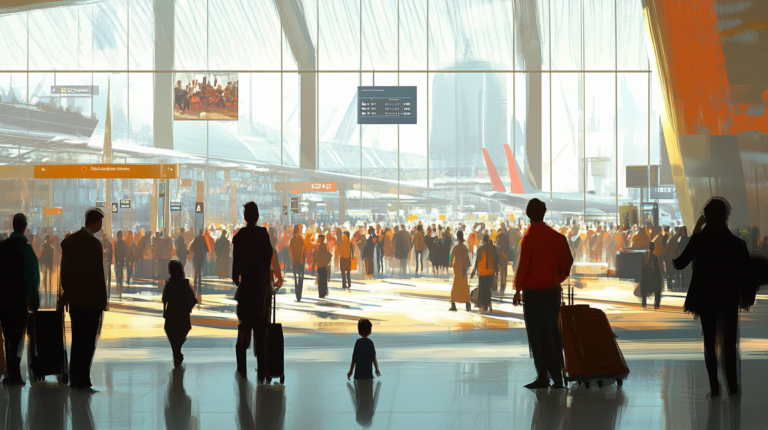Mastering Business Travel Management

For frequent flyers, corporate travel is more than just a chance to earn miles—it’s about forging connections and closing deals. Yet, managing business travel can be challenging without a solid strategy in place.
1. Why Corporate Travel Matters

Corporate travel fuels growth by fostering personal connections across markets. Meetings, conferences, and training sessions drive deals and team synergy, though they also introduce high costs, complex logistics, and safety considerations. Developed policies and dedicated management help mitigate these challenges while boosting company reputation and ROI.
In my own travels, I’ve observed that an in-person handshake can seal deals faster than a dozen video calls. According to the Global Business Travel Association, overall business travel spend is projected to rise by 20% in 2025 compared to pre-2020 figures, underscoring the enduring need for face-to-face meetings. Despite the convenience of virtual tools, there’s something about being on the ground that adds depth to professional relationships.
When budgets, time, and travel policies align, organizations can gain the upper hand. I’ve seen firsthand how thoughtful corporate travel strategies preserve funds, encourage engagement, and create genuine human connections across borders. In many industries, the personal element remains invaluable, and no digital platform can fully replicate that spark.
2. Streamlined Tools for Easy Booking

Manual booking processes can be time-consuming and error-prone for busy travelers. Modern platforms including TravelPerk, TravelBank, Spendesk, and Flightfox centralize flights, hotels, and expenses on one dashboard. KAYAK for Business, for instance, serves over 30,000 companies with 24/7 support, self-service options, and integrated multi-source inventory—simplifying approvals and expense tracking so employees can focus on what matters most.
I like to keep my options open by researching various tools that cater to different budgets and travel policies. It’s all about finding that sweet spot—like choosing a window seat that gives you enough legroom without breaking the bank. A recent study suggests that integrated travel platforms can reduce booking times by up to 30%, freeing travelers to focus on the real reason for their journey.
In my experience, a centralized solution significantly reduces mistakes and duplications. Rather than juggling countless browser tabs or waiting for a finance department’s green light, travelers can finalize itineraries in a few clicks. This not only makes for a smoother trip but also fosters better accountability when expense reports roll in—a detail every seat strategist appreciates.
3. Staying on Budget and On Policy

Clear corporate guidelines ensure travelers book within set parameters and track spending accurately. Integrated solutions automatically categorize expenses and provide real-time cost analysis, reducing back-and-forth between finance teams and travelers. By consolidating bookings and policies within a single system, organizations reduce compliance hurdles and maintain greater financial control.
I’ve relied on built-in policy prompts that pop up whenever I veer off approved hotels or flight classes. If I’m about to select a charming boutique hotel that’s twice the allowed rate, the system nudges me back on track. Honest, transparent guardrails do wonders for keeping spending in check and removing guesswork from the approval process.
To further improve cost visibility, many companies now adopt dynamic budgets driven by real-time market data. For instance, if the market indicates a sudden jump in rates for a specific route, the platform instantly updates permissible spending benchmarks. Those who stick to well-defined parameters often see stress-free reimbursements and far fewer headaches once the trip is over.
4. Ensuring Traveler Safety and Productivity

On-the-ground safety is paramount, especially in ever-changing global conditions. Corporate travel management solutions incorporate risk assessments, duty-of-care protocols, and emergency support options to keep employees secure. Major firms like Deloitte devote entire leadership teams to manage complex transportation and hospitality portfolios, highlighting the significance of in-depth oversight. A well-supported traveler is not only safer but also more productive, enabling meaningful in-person connections that drive business success.
Personally, I keep a close eye on advisories and local alerts for each destination I touch down in. When you’re sitting in seat 5A, the last thing you want is to be surprised by an unexpected curfew or event that disrupts your plans. A timely update or an automated alert can be the difference between a productive client dinner and a hasty scramble back to the hotel.
I’ve also noted that companies taking traveler well-being seriously enjoy higher employee satisfaction. According to industry data, 76% of business travelers said they preferred companies with clear emergency protocols. From offering pre-travel briefings to arranging secure ground transport, every detail matters when it comes to safeguarding both individual health and organizational reputation.
5. Looking Ahead with Next-Gen Platforms

As global business travel rebounds, new technologies are emerging to further streamline every step of the journey. Brex‘s Summer ’25 release offers AI-powered insights and integrated expense management that slash approval wait times and minimize errors. These advancements transform corporate travel into a strategic advantage, reducing costs and optimizing experiences for every seat—especially seat 5A.
I’m excited to see AI-driven recommendations that tap into thousands of shared traveler reviews, helping me discover the most convenient departure times or top-notch lounges. In a world where time is money, automation and predictive analytics can mean the difference between a missed connection and a smooth door-to-door itinerary. It’s like having a personal assistant who never sleeps.
Looking at industry forecasts, many believe that by 2026, over 60% of routine corporate travel bookings will be managed by self-learning algorithms. This shift enables companies to deliver hyper-personalized experiences, from seat preferences to loyalty program perks, ensuring every moment spent en route adds tangible value for both the traveler and the organization.
Final Thoughts

Business travel has never been a simple affair, but it remains a critical pillar for building trust and forging new opportunities. As technology evolves, companies must align policies, tools, and traveler needs into one seamless process. After all, a carefully planned itinerary can be just as vital as a winning sales pitch.
From the early flight check-in to ensuring a safe return, every detail counts in managing an efficient trip. Embracing modern booking platforms, stringent budgeting measures, and robust safety protocols is how organizations stay agile in a marketplace that demands constant innovation.
By leveraging real-time data, dynamic pricing, and traveler-centric support, a greater sense of transparency and collaboration emerges. For both frequent flyers and first-time corporate travelers, the future holds many possibilities—each more promising than the last.
Ryder’s Take
I’ve soared countless miles, yet each journey still brings that thrill of possibility. I pick seats for the view, yet I never lose sight of core travel essentials: preparation, flexibility, and a touch of insider insight. Trust me, it’s the little things—like confirming reliable Wi-Fi—that make all the difference.
When you find that ideal exit row legroom or the perfect seat near a power outlet, you realize thoughtful planning isn’t just about comfort; it’s about maximizing every moment in the air, preparing you for even bigger successes on the ground.






